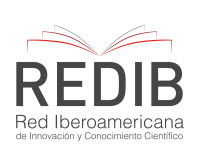The conceptual figures of Ariel and Caliban in the Shakespearen kaleidoscope of The Tempest an their French and Latin American reception. The barbaric and the civilized through Renan, Darío and Rodó
Keywords:
Ariel, Caliban, Modernity, Reason, Barbarism, CivilizationAbstract
In 1898, across his text called “Triunfo de Calibán. Visiones de América” (“Victory of Caliban. Visions of America”), Rubén Darío appropriated the conceptual character of Caliban for his own cultural discourse, not devoid of strong polemic strength in the context of the war of Cuba and the emergency of the United States as the new world power of the modern times. That was twenty years after the publication in France of Renan’s Caliban, suite de la Tempête (Caliban. Continuation of The Tempest. If Darío clearly suggests a continuity with Renan’s topic of the mass society, he introduced however a new opposition, missing in Renan’s own writings, which is the opposition between two models of modernity, the Greco-Latin modernity, personified by the Mediterranean Europe (France, Italy, Spain, Portugal) together with Latin America’s nations and the Anglo-Saxon modernity, personified by the nations of northern Europe and North America, principally the United States. José Enrique Rodo, through his Essay Ariel, deepened the ideas already developed by Darío, but however he shifted the gravity centre to the character of Ariel: in Rodo, as in Shakespeare’s Tempest, Ariel incarnates classical measure and classical reason, against the exorbitant aspects of Caliban. Now Rodo imagines a real triumph of Ariel, that is, of Latin civilization, against Dario’s triumph of Caliban. In this paper, in the context of the commemoration of Dario’s death, which occurred in 1916, and of the four centenary of Shakespeare’s death, we propose a constellation between Shakespeare’s Tempest, together with Renan, Darío and Rodo to deal with the notions of the barbarian and the civilized in the horizon of the question of modernity, the postcolonial and the emergence of the twenty century new superpower.
Downloads
Published
How to Cite
Issue
Section
License
Nota del Copyright
Los trabajos presentados en Revista Pilquen, Sección Ciencias Sociales deben ser originales e inéditos y no estar postulados simultáneamente en otras revistas. El envío de todo tipo de colaboración implica la aceptación de las normas editoriales de la revista y la autorización al Comité Editorial para que difunda los trabajos tanto en la revista como en las bases de datos o sistemas de indización en donde se alojan los contenidos de Pilquen.
Las y los autores que publican en esta revista están de acuerdo con los siguientes términos:
1) Las autoras y los autores conservan los derechos de autor y garantizan a la revista el derecho de ser la primera publicación del trabajo al igual que licenciado bajo una Creative Commons "Atribución -No Comercial CC BY-NC-SA”, mediante la cual ser permite copiar, reproducir, distribuir, comunicar públicamente la obra y generar obras derivadas, siempre y cuando se cite y reconozca al autor original. No se permite, sin embargo, utilizar la obra ni sus posibles obras derivadas con fines comerciales.
2) Las y los autores pueden establecer por separado acuerdos adicionales para la distribución no exclusiva de la versión de la obra publicada en la revista (por ejemplo, situarlo en un repositorio institucional o publicarlo en un libro), con un reconocimiento de su publicación inicial en esta revista.
3) Las y los autores no recibirán compensación monetaria de Pilquen por el uso del material contenido en el artículo; así como tampoco asumirán ningún costo de publicación de los mismos.












